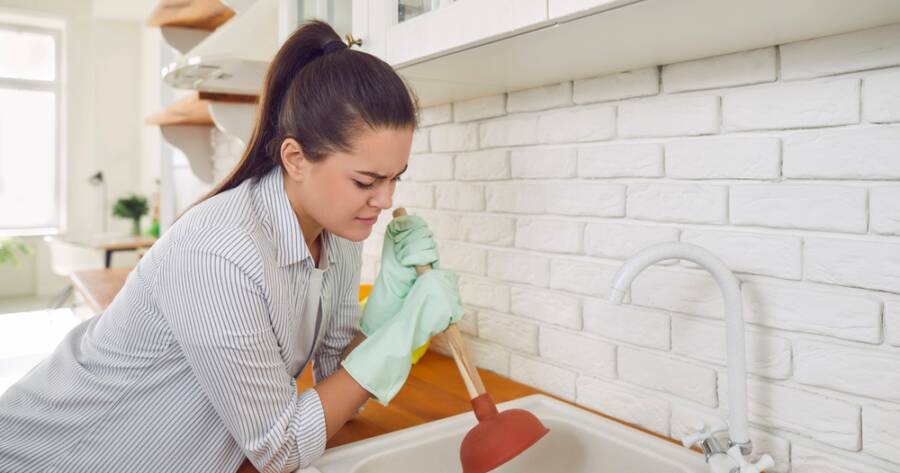Clogged drains are a common household problem, but reaching for harsh chemical solutions isn’t your only option. DIY methods offer safe, effective ways to clear blockages using items you likely already have at home. From natural cleaners to simple tools, DIY approaches are not only eco-friendly but also protect your pipes from potential damage. With a little effort and the right techniques, you can tackle stubborn clogs and keep your plumbing running smoothly without resorting to toxic products.
Using Boiling Water: The Simplest Solution
One of the easiest ways to tackle a minor drain clog is with boiling water. This method works particularly well for blockages caused by grease, soap residue, or small amounts of debris. Start by boiling a kettle or pot of water. Slowly pour the hot water down the drain in stages, allowing it to break down the clog as it flows through. If the water begins to back up, pause and let it settle before adding more.
Repeat this process two or three times for maximum effectiveness. However, avoid using boiling water on PVC pipes or if your drain is connected to a porcelain fixture, as extreme heat could cause damage. This simple, chemical-free solution can often restore proper drainage quickly.
The Power of Baking Soda and Vinegar
Baking soda and vinegar are a dynamic duo for unclogging drains naturally. Start by pouring half a cup of baking soda into the drain, followed by an equal amount of white vinegar. The fizzing reaction helps break down grease, soap scum, and other residue causing the blockage. Let the mixture sit for 15-30 minutes to work its magic.
Follow up by flushing the drain with a pot of boiling water (or just hot water for PVC plumbing) to clear the loosened debris. This method is safe for most types of pipes and is especially effective for preventing clogs when used as regular maintenance. Not only does it tackle the clog, but it also neutralizes odors, leaving your drains fresh and functional without the need for harsh chemicals.
Trying a Plunger or Drain Snake
When boiling water or natural cleaners aren’t enough, a plunger or drain snake can effectively tackle stubborn clogs. For a plunger, ensure a tight seal over the drain and use a firm, consistent plunging motion to dislodge the blockage. If the clog persists, a drain snake may be the better option.
Insert the snake into the drain, turning the handle to catch debris and pull it out. For tougher clogs, a hand auger can help break up or remove the obstruction. These tools are affordable, reusable, and save you from costly plumber visits. Remember to clean and disinfect them after use to maintain hygiene. With a little effort, these mechanical methods can restore your drain’s functionality with ease.
Preventing Future Clogs Naturally
The best way to avoid clogged drains is through proactive maintenance. Start by being mindful of what goes down your drains—avoid flushing grease, coffee grounds, and large food particles in the kitchen sink. Use drain covers to catch hair and debris in bathroom sinks and showers. Regularly flush your drains with boiling water or a baking soda and vinegar mixture to keep them clear of buildup.
For long-term care, consider installing strainers or traps to minimize waste entering your plumbing system. Educating household members about proper disposal practices can also go a long way in preventing clogs. By incorporating these habits, you can maintain free-flowing drains and reduce the need for frequent unclogging efforts.
Keep Your Drains Flowing with Simple, Chemical-Free Solutions
Unclogging a drain doesn’t have to involve harsh chemicals or expensive tools. By using natural remedies like boiling water, baking soda and vinegar, or simple tools such as plungers and drain snakes, you can resolve clogs safely and effectively.
Incorporating regular maintenance and preventive measures ensures your plumbing stays in good condition for the long term. With these DIY methods, you can tackle drain issues confidently, protect your pipes, and maintain an eco-friendly approach to home care.

